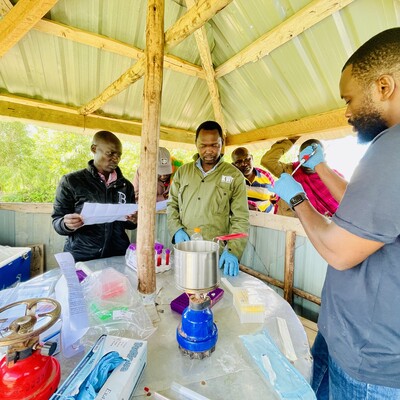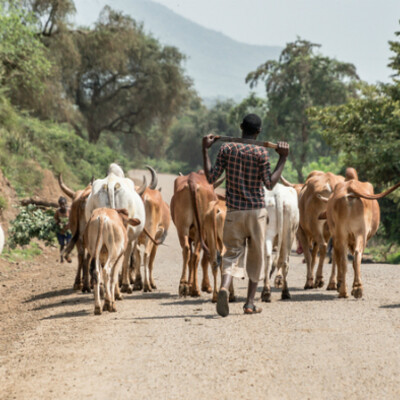
Establishment of a vaccine technology platform for African swine fever as the first target
Lucilla Steinaa1, Walter Fuchs2, Hussein Abkallo1, Nicholas Svitek1, Vish Nene1, Anna Lacasta1, Nacyra Assa-Garcia3, Sanjay Vashee3
1International Livestock Research Institute (ILRI), 2Friedrich Loeffler Institute (FLI), 3J. Craig Venter Institute (JCVI).
ILRI is working together with JCVI and FLI on an exciting project for the development of a platform for rapid production of attenuated African swine fever viral vaccine candidates. This project is funded by International Development Research Centre (IDRC) and co-funded by the Bill and Melinda Gates Foundation (BMGF) and the CGIAR research program on Livestock. It seeks to establish a synthetic genomics platform, where a complete viral genome can be assembled from smaller overlapping fragments of the genome that are cloned separately and then transfected into host cells to yield live virus. By having small building blocks of the viral genome, it becomes easy to make modifications in different regions of the viral genome and in certain genes, e.g., deletions to attenuate the virus. The group is also establishing the CRISPR-Cas technology for genome editing.
African swine fever, which is a deadly pig disease caused by a virus, has lately become a global problem. It is endemic in most African countries and it spread from the south to Eastern Europe in 2007 and from there to Russia and now also to China. In Africa it impedes the growth of the pig sector in certain countries such as Uganda, which has a large pig production.
The group has so far made the first viral genome modification using CRISPR-Cas technology, which is currently being confirmed, and on the synthetic component of the project, the building blocks of the complete viral genome are ready for assembly from sub-fragments. Certain gene modifications are also underway. Importantly, a procedure for initiating the production of virus from transfected viral genomic DNA is in place. The group is expecting that new attenuated viruses can enter a testing phase in the second half of 2019 to early 2020.
These two technology platforms can then form the basis for additional vaccine projects targeting other pathogens. Contact: Lucilla Steinaa, e-mail: l.steinaa at cgiar.org


















